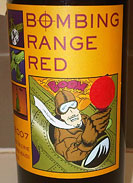Confederation in 1867 was supposed to create a single nation out of a group of separate British colonies in North America. In spite of that, in some areas, individual provinces treat one another as foreign entities for trading purposes. Alcohol, for example, is one product that gets special treatment for inter-provincial sales — almost always to interfere with or even prevent the purchase of alcohol in one province for consumption in another. 680News reports on the latest effort to harmonize the rules regarding alcohol sales across provincial borders:
Free my grapes will be the rallying cry on Parliament Hill on Tuesday as a committee hears from supporters of a private member’s bill seeking to erase a 1928 rule that restricts individuals from bringing wine across provincial borders.
Shirley-Ann George ran into that problem when she was visiting B.C. and then tried to join a wine club through a vineyard there, only to be told the vineyard couldn’t ship to her home in Ontario.
She decided to start up the Alliance of Canadian Wine Consumers to try to change it.
“You’ve got to be kidding,” is the most common refrain from people first learning about the rule, George said.
“Most Canadians don’t even know it is illegal. They think it’s silly, archaic and it’s time that the government started to think in the 21st century.”
Of course, the provinces are not keen to allow individuals to buy wine directly — that might threaten their respective monopolies (and the juicy profits they derive from being “the only game in town”). One of their current arguments against the bill is that it will somehow give Canadian wines an unfair advantage and that could cause issues with our international trade partners. I’m not sure how it benefits Canadian wineries to be shut out of selling to Canadian wine drinkers in other provinces, but I’m sure that they have some cockamamie statistical “proof” that they’ll trot out to bolster their argument.

 Stunningly Stupid … and if you happened into the LCBO this past weekend you might have noticed a cartoon-style label on a bottle of Bombing Range Red with a red sticker adorning a certain part of the label. For those who were curious and intrepid enough to remove the sticker, expecting to find profanity or nudity you were disappointed to find a glass of red wine that (with the right amount of imagination) might have resembled a bomb — or at least a glass with a bomb-style fuse. Is this a case of political correctness gone amok? Or is the LCBO afraid we’ll get bombed upon seeing the sight? Personally I am stunned at what the higher ups at the LCBO find offensive or what they think we are too … I don’t know … childish, immature, delicate (you pick your word) to see? As it turns out the truth is even more stunningly stupid then I originally thought. It was ordered to be applied by the LCBO Quality Assurance Department, because the pilot is holding a glass of wine and as part of the LCBO’s social responsibility function they don’t want to give you the impression that it is a responsible action to drink and fly … So instead of taking it as the cartoonish fun that it is, the LCBO has to go and ruin it; but the last laugh is on the Board, because anyone worth their salt will be peeling that sticker off post-haste with a “why the f**k did they cover that” question on their face and on their lips. Thanks for being there to save me LCBO, from the evils that men do.
Stunningly Stupid … and if you happened into the LCBO this past weekend you might have noticed a cartoon-style label on a bottle of Bombing Range Red with a red sticker adorning a certain part of the label. For those who were curious and intrepid enough to remove the sticker, expecting to find profanity or nudity you were disappointed to find a glass of red wine that (with the right amount of imagination) might have resembled a bomb — or at least a glass with a bomb-style fuse. Is this a case of political correctness gone amok? Or is the LCBO afraid we’ll get bombed upon seeing the sight? Personally I am stunned at what the higher ups at the LCBO find offensive or what they think we are too … I don’t know … childish, immature, delicate (you pick your word) to see? As it turns out the truth is even more stunningly stupid then I originally thought. It was ordered to be applied by the LCBO Quality Assurance Department, because the pilot is holding a glass of wine and as part of the LCBO’s social responsibility function they don’t want to give you the impression that it is a responsible action to drink and fly … So instead of taking it as the cartoonish fun that it is, the LCBO has to go and ruin it; but the last laugh is on the Board, because anyone worth their salt will be peeling that sticker off post-haste with a “why the f**k did they cover that” question on their face and on their lips. Thanks for being there to save me LCBO, from the evils that men do.

